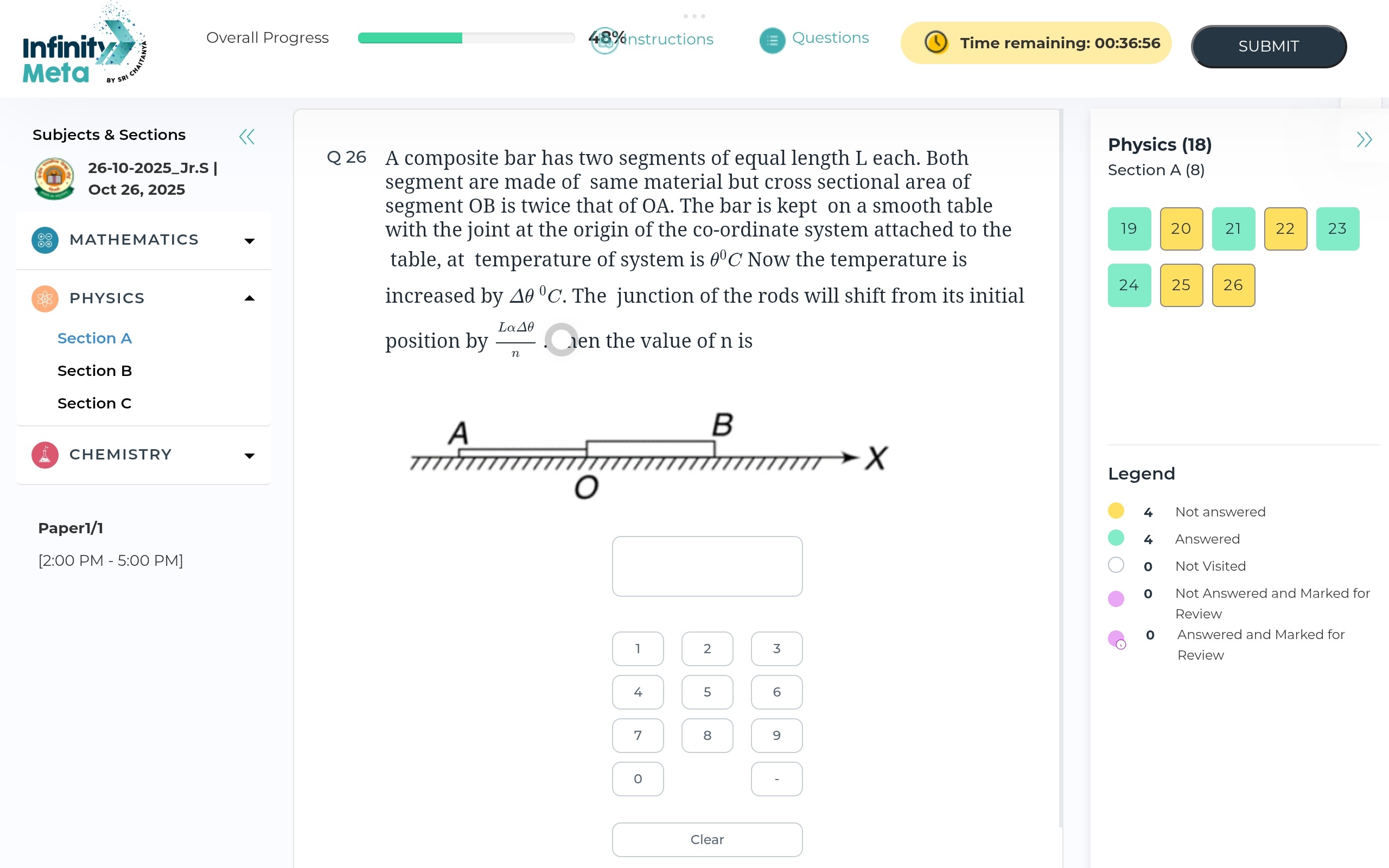Question
Question: A composite bar has two segments of equal length L each. Both segment are made of same material but ...
A composite bar has two segments of equal length L each. Both segment are made of same material but cross sectional area of segment OB is twice that of OA. The bar is kept on a smooth table with the joint at the origin of the co-ordinate system attached to the table, at temperature of system is θ∘C Now the temperature is increased by Δθ∘C. The junction of the rods will shift from its initial position by nLαΔθ. Then the value of n is

3
-3
1/3
-1/3
The value of n is -1/3.
Solution
Let the cross-sectional area of segment OA be A and that of OB be 2A. Let the initial position of the joint be at the origin O. Let segment OA be from x=−L to x=0 and segment OB be from x=0 to x=L. Let the final position of the joint be xj.
The final length of segment OA is LOA′=xj−(−L)=xj+L. The strain in OA is ϵOA=LLOA′−L=Lxj. The final length of segment OB is LOB′=L−xj. The strain in OB is ϵOB=LLOB′−L=L−xj.
The total strain in each segment is the sum of thermal strain and mechanical strain: ϵ=αΔθ+σ/E. So, Lxj=αΔθ+EσOA and L−xj=αΔθ+EσOB.
Due to force equilibrium at the joint, the force exerted by OA on OB is equal and opposite to the force exerted by OB on OA. Thus, σOAA=−σOB(2A), which gives σOA=−2σOB.
Substituting σOA=−2σOB into the strain equations and solving for xj: EσOA=Lxj−αΔθ EσOB=L−xj−αΔθ
Substituting these into σOA=−2σOB: E(Lxj−αΔθ)=−2E(L−xj−αΔθ) Lxj−αΔθ=L2xj+2αΔθ −Lxj=3αΔθ⟹xj=−3LαΔθ.
The shift in position is xj. The question states the shift is nLαΔθ. Therefore, nLαΔθ=−3LαΔθ. This implies n1=−3, so n=−31.
